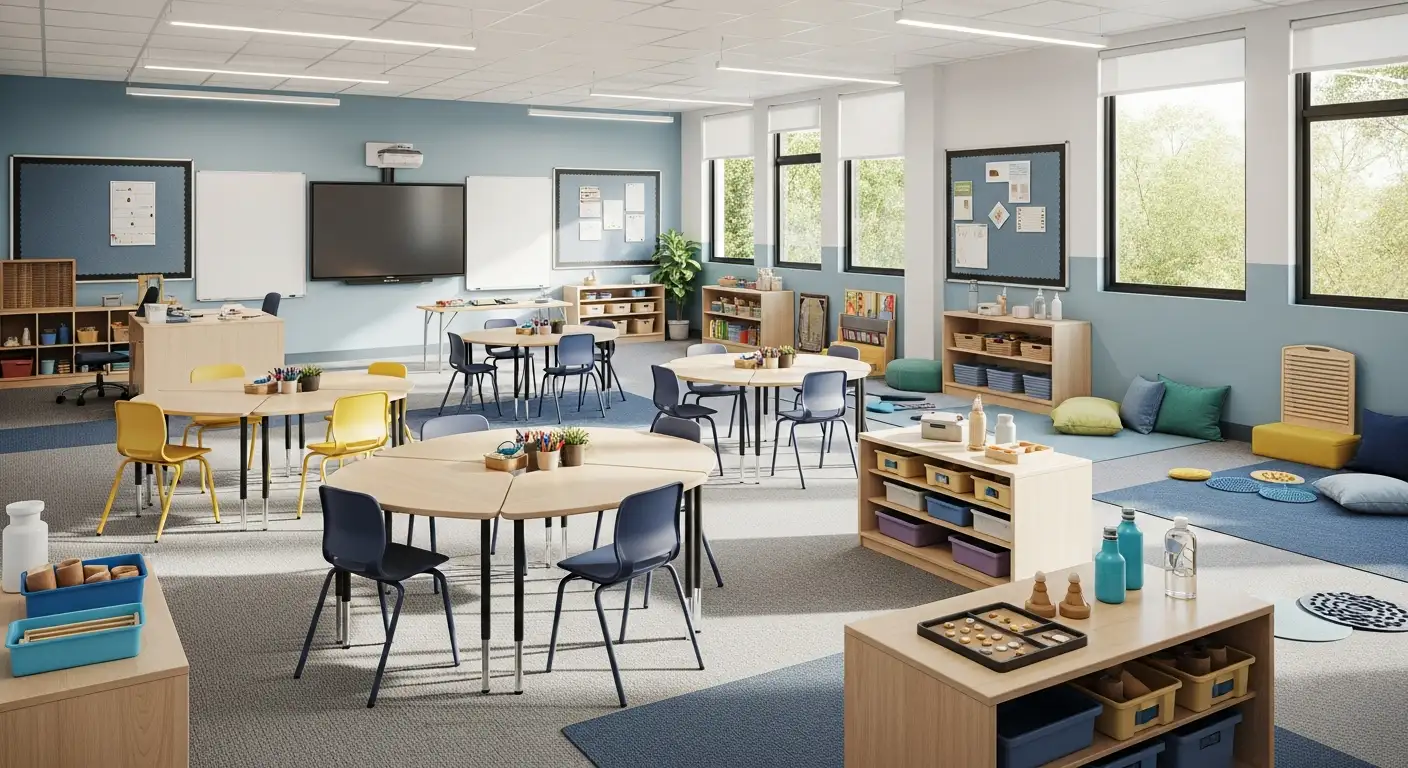Understanding the Foundations of Support for Autistic Learners
Supporting autistic children in group learning settings requires a comprehensive approach that combines structured routines, visual supports, sensory accommodations, and collaborative teamwork. By understanding each child's unique needs and fostering an environment of acceptance and understanding, educators and caregivers can significantly enhance participation, engagement, and social inclusion. This article explores evidence-based strategies, practical tools, and team collaboration methods essential for creating effective and inclusive group learning experiences.
Principles of Creating an Inclusive Environment
What are effective methods for creating inclusive classroom environments for autistic students?
Creating an inclusive classroom requires thoughtful strategies tailored to each child's needs. Installing sensory-friendly spaces, such as quiet zones with calming tools or noise-canceling headphones, helps students manage sensory overload. Adjustments to lighting and reducing background noise can make environments more comfortable. Establishing predictable routines through visual schedules or visual cues reduces uncertainty and anxiety, helping children feel secure and know what to expect.
Using visual supports like picture schedules, visual prompts, and social narratives makes routines clearer and enhances comprehension. Clear, simple instructions paired with visual demonstrations improve understanding and participation.
How can educators facilitate participation and social engagement of autistic children in group activities?
Supporting social interaction involves creating structured opportunities for peer engagement. Activities such as sharing time, cooperative games, and buddy systems foster friendships and social skills.
Using visual aids during group work helps children follow directions and participate actively, promoting inclusion. Positive reinforcement like praise or preferred activities encourages participation and social behaviors.
A welcoming classroom climate, combined with understanding and accepting attitudes, encourages autistic children to take part in social and academic activities confidently.
| Strategy | Description | Additional Note |
|---|---|---|
| Sensory accommodations | Quiet zones, noise reduction, calming tools | Supports sensory regulation |
| Visual supports | Schedules, social stories | Promotes routine understanding |
| Structured social activities | Buddy systems, group games | Builds social skills |
| Positive reinforcement | Praise, rewards | Encourages desired behaviors |
| Clear communication | Simple language, visual cues | Enhances comprehension |
Employing these evidence-based practices—such as visual supports and structured social opportunities—creates a nurturing environment that not only meets the diverse needs of autistic children but also promotes their active participation and social growth.
Utilizing Visual Supports and Routines
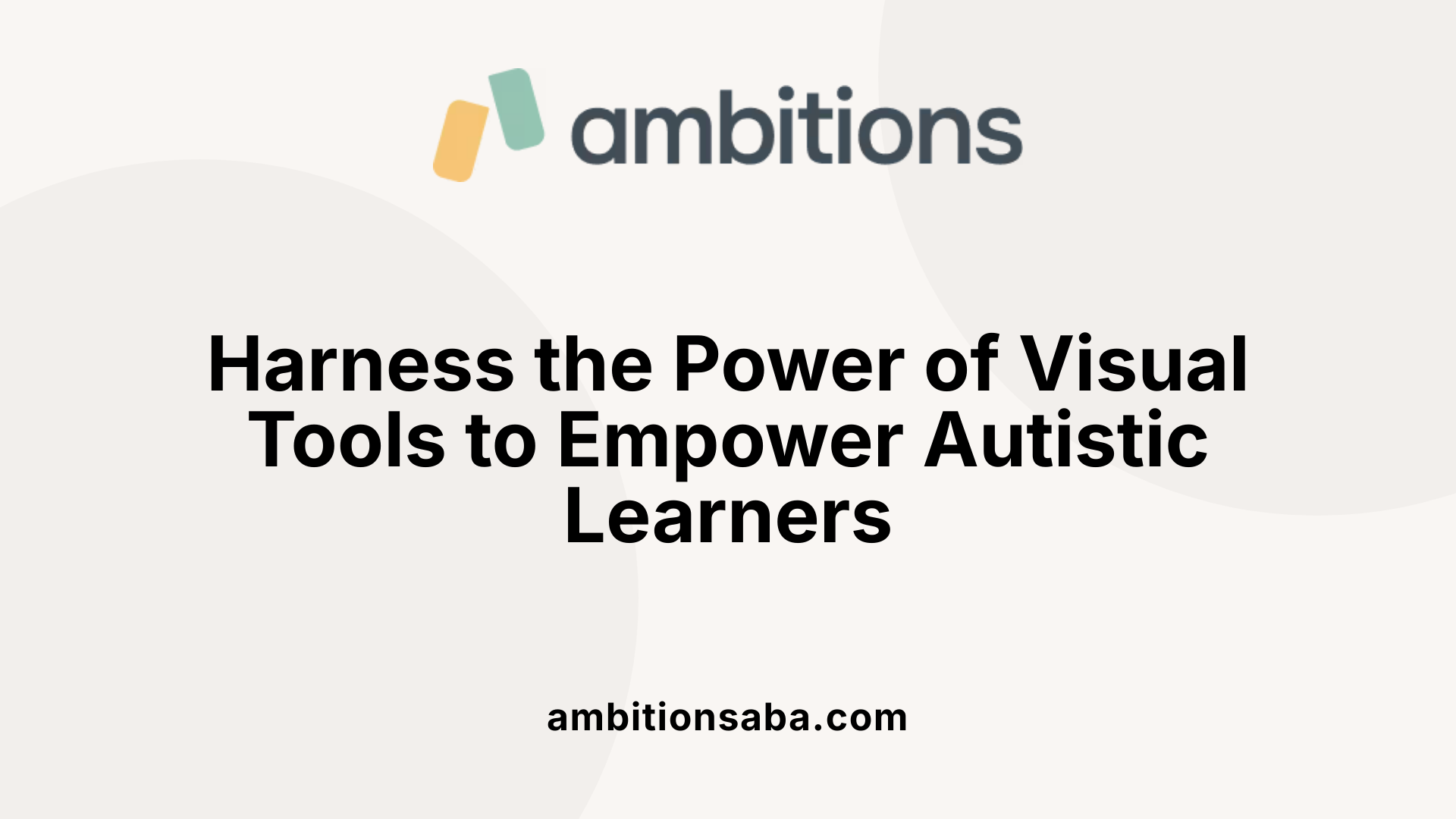
What practical tips and resources are available for educators and caregivers working with autistic children?
Implementing visual supports is essential for helping children with autism understand routines, communicate, and reduce anxiety. Use tools such as visual schedules, picture cards, and communication devices tailored to the child's needs. Establishing and maintaining consistent routines provides a predictable environment that fosters a sense of security.
Positive reinforcement strategies, including praise and tangible rewards, motivate children and encourage desired behaviors. Resources like the CDC Autism Partner Toolkit and the IDEA guidelines for individualized education plans (IEPs) offer valuable guidance and structured approaches for educators and caregivers working with autistic children.
How can educators facilitate participation and social engagement of autistic children in group activities?
Supporting social interaction involves integrating visual supports and clear routines into classroom activities. Using visual aids like picture schedules and social stories helps children anticipate and understand group tasks.
Creating opportunities for collaboration with support teams and families ensures interventions are personalized and effective. Tailoring group activities to include peer interaction, shared interests, and structured play encourages social skills development. Consistent use of positive reinforcement, along with patience and understanding, makes inclusive participation achievable for children with autism.
Team Collaboration for Effective Support
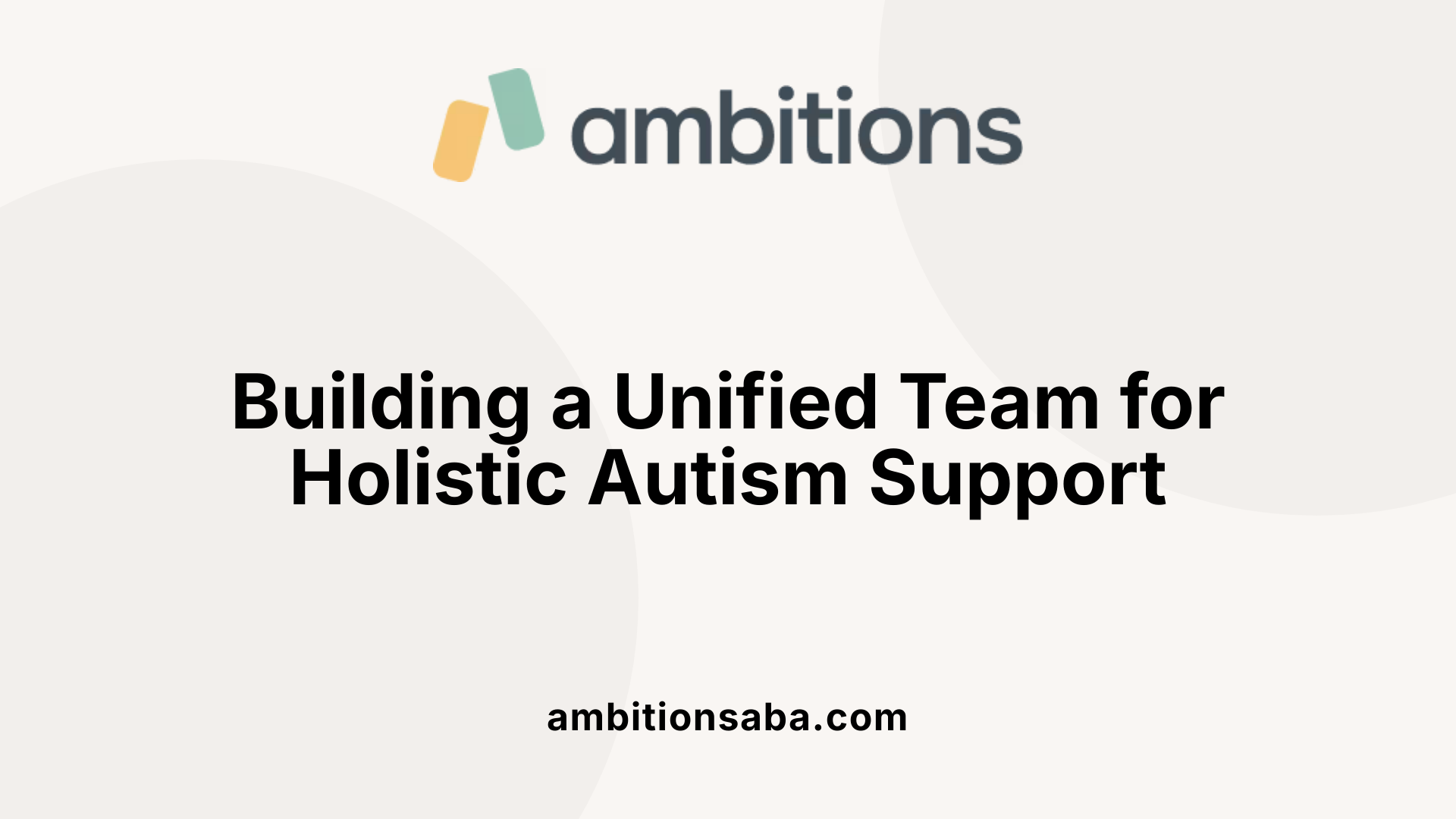
What are effective approaches and strategies for team collaboration to support autistic children in educational settings?
Supporting children with autism requires a united effort among educators, families, and specialists. Effective collaboration ensures that each child's individual needs are met through a comprehensive approach.
Regular communication forms the backbone of successful teamwork. Teachers, therapists, and parents should share observations, progress data, and strategies frequently. This ongoing dialogue helps adapt plans and ensure consistency across different environments.
Developing personalized support strategies starts with creating Individualized Education Plans (IEPs) or IFSPs. These plans set tailored goals, accommodations, and intervention methods based on the child's unique strengths and challenges. Incorporating evidence-based practices like visual supports, structured routines, and positive reinforcement enhances learning and behavior.
Interdisciplinary collaboration involves bringing together different professionals—speech therapists, occupational therapists, psychologists, and educators—to share insights and coordinate efforts. This teamwork ensures a holistic approach to support, addressing communication, sensory needs, and social skills.
Continual professional development is vital. Educators and support staff should participate in training on autism strategies, new research, and effective teamwork. This learning helps implement best practices and keeps the support dynamic and responsive.
Through constant dialogue, tailored planning, and shared expertise, teams can create a positive, inclusive environment where autistic children thrive academically and socially.
| Strategy Aspect | Approach | Benefit |
|---|---|---|
| Communication | Regular updates and team meetings | Consistent support and quick adaptations |
| Planning | Personalized IEP/IFSP development | Meets individual needs effectively |
| Collaboration | Interdisciplinary teamwork | Addresses multiple developmental areas |
| Professional Growth | Ongoing autism training | Keeps strategies current |
Building a cohesive team with open lines of communication and shared goals creates a stable foundation for a child’s growth and success.
Addressing Sensory and Environmental Needs
What are effective methods for creating inclusive classroom environments for autistic students?
Creating a welcoming and supportive environment for autistic students involves several sensory accommodations. Adjusting lighting to avoid glare, reducing background noise, and providing calming spaces can significantly decrease sensory overload. Visual supports like scheduled routines, pictorial cues, and social narratives help students understand daily activities, reducing anxiety and promoting independence.
Providing sensory tools such as fidget toys, noise-canceling headphones, and sensory bins allows students to self-regulate their sensory input throughout the day. Organizing classroom layouts to minimize distractions — for example, by carefully choosing seating arrangements — also helps meet individual sensory needs.
These adaptations make it easier for autistic students to engage fully in the learning process while feeling safe and comfortable.
How can educators facilitate participation and social engagement of autistic children in group activities?
Facilitating active participation and social connection involves creating sensory-friendly spaces where students can manage sensory sensitivities before engaging in group tasks.
Structured activities that incorporate sensory tools help children self-regulate, making it easier for them to join peer interactions. Using visual aids and simplified instructions ensures clarity, while planned routines and advance warnings about transitions prepare students for upcoming changes.
Encouraging peer support and cooperative activities promotes social skills and inclusion. For example, buddy systems and small group work allow autistic children to practice social behaviors in a safe, supportive setting.
Overall, combining sensory accommodations with specific strategies for social engagement helps autistic children participate fully and confidently in classroom life.
| Strategy | Description | Benefit |
|---|---|---|
| Sensory tool use | Providing fidget toys, noise-canceling headphones | Helps regulate sensory input, reduces stress |
| Visual supports | Visual schedules, social stories | Increases understanding, reduces anxiety |
| Structured routines | Clear, consistent daily activities | Promotes predictability and comfort |
| Peer-mediated activities | Buddy systems, group work | Encourages social skills and peer relationships |
| Sensory-friendly spaces | Calm zones, quiet corners | Provides a refuge for sensory regulation |
Implementing these methods aligns with best practices, supporting the diverse sensory and social needs of autistic learners.
Supporting Communication and Social Skills
What practical tips and resources are available for educators and caregivers working with autistic children?
Supporting communication effectively involves multiple strategies tailored to each child's unique needs. Using alternative and augmentative communication (AAC) tools, such as picture exchange systems, communication boards, or speech-generating devices, can significantly enhance understanding and expression. Visual cues like schedules, picture cards, and social stories help clarify routines and social expectations, reducing anxiety and promoting independence.
Promoting social skills is equally important. Peer-mediated interventions create opportunities for children with autism to interact with classmates in a structured and supportive manner. Activities like sharing time, buddy systems, and social narratives teach social norms and encourage positive interactions.
Emotion recognition and empathy-building activities play a vital role. Using emotion cards helps children identify and understand different feelings, while scenario-based activities like 'What Would You Do?' scenarios and role-playing foster emotional awareness and perspective-taking.
How can educators facilitate participation and social engagement of autistic children in group activities?
To encourage active participation, educators should implement structured social opportunities such as small group work and cooperative games.
Peer mentoring programs, where classmates serve as social partners, foster inclusion and help autistic children develop social skills in a natural context.
Social narratives and visual supports prepare children for upcoming activities or transitions, making participation smoother.
Providing opportunities for children to practice turn-taking, sharing, and collaboration in a supportive environment helps build confidence.
Creating a classroom culture that emphasizes acceptance and understanding, using inclusive language and activities that celebrate diverse abilities, encourages meaningful engagement. Tailoring activities to match individual interests and sensory preferences further increases motivation and enjoyment.
| Strategies | Examples | Benefits |
|---|---|---|
| AAC tools | Picture exchange communication, speech-generating devices | Enhances communication skills |
| Visual supports | Social stories, visual schedules | Reduces anxiety, improves understanding |
| Peer interactions | Buddy systems, cooperative games | Promotes social development |
| Emotion recognition | Emotion cards, scenario role plays | Builds empathy and emotional literacy |
Employing these strategies creates a supportive environment where autistic children feel valued and are empowered to develop meaningful social connections.
Promoting Social Inclusion and Peer Engagement
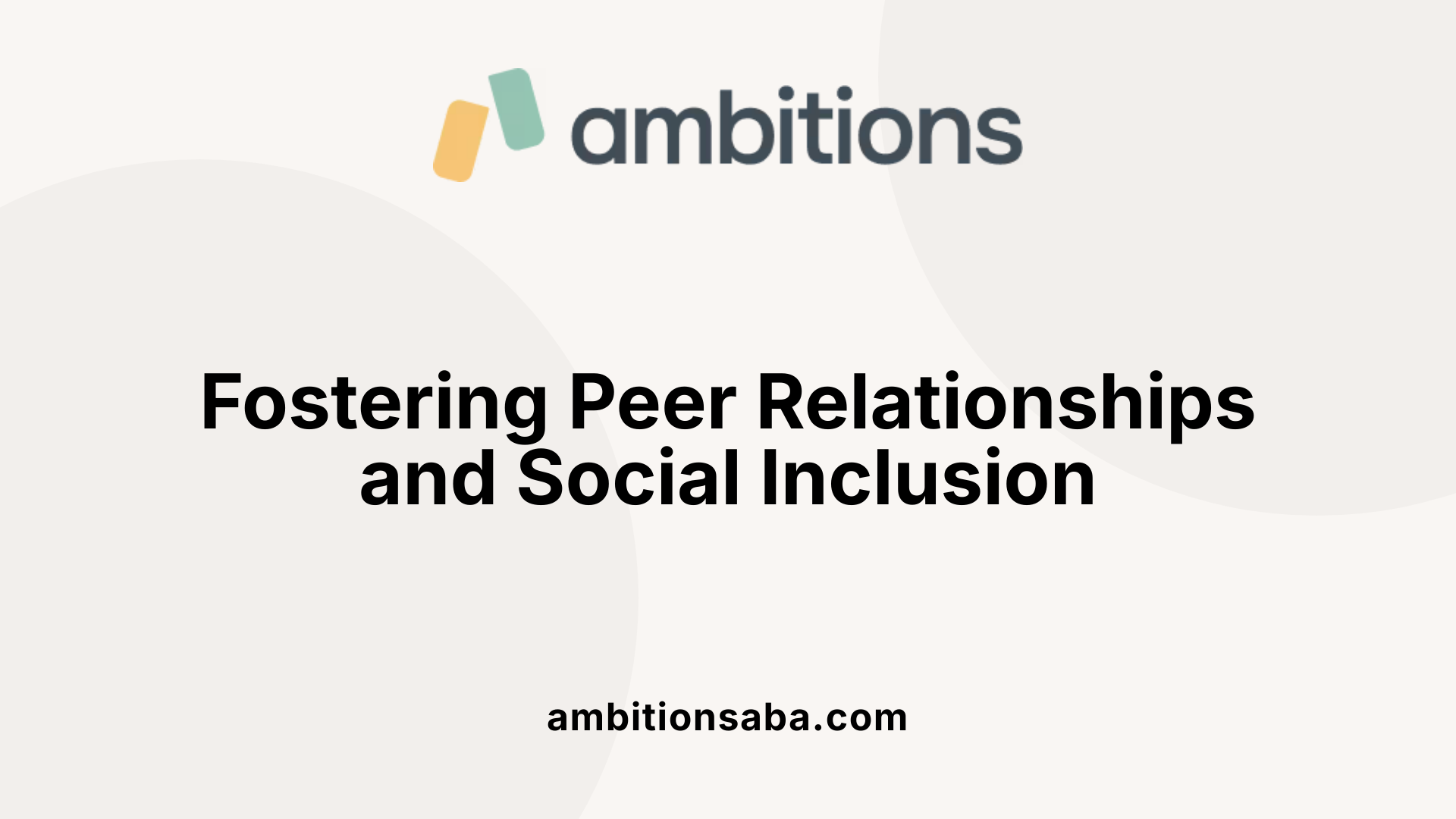
What are effective methods for creating inclusive classroom environments for autistic students?
Creating an inclusive environment for students with autism involves promoting positive peer interactions. Implementing peer buddy systems and cooperative learning activities are proven strategies that foster a sense of belonging and social skills development.
Peer buddy systems pair students with autism with supportive classmates who can model appropriate social behavior. These buddies help facilitate social interactions, guide participation in group activities, and serve as positive role models. Cooperative learning activities, such as group projects or shared tasks, encourage collaboration and communication among students.
Using social narratives and visual supports, like picture cards or storyboards, helps autistic students understand social expectations. These tools promote understanding of social cues and proper interaction, making peer engagement smoother.
In addition, integrating sharing activities, such as classroom show-and-tell or shared art projects, encourages students to practice sharing and turn-taking in a supportive setting. Regular group projects foster teamwork, patience, and mutual respect.
Fostering positive peer relationships can also be supported through activities like the 'Name Game,' where students introduce themselves, and 'What Would You Do?' scenarios, which help develop empathy. These activities teach children to recognize emotions, understand others’ perspectives, and build genuine connections.
Overall, strategies like structured social activities, visual supports, and intentional pairing help create a welcoming atmosphere where students with autism can thrive socially and academically.
| Strategy | Description | Benefits |
|---|---|---|
| Peer Buddy Systems | Pairing students with supportive peers | Promotes social skills, inclusion, and friendship |
| Cooperative Learning Activities | Group projects and shared tasks | Encourages teamwork and communication |
| Social Narratives and Visual Supports | Stories, picture cues, and visual prompts | Clarifies social expectations and cues |
| Sharing and Group Projects | Activities that promote sharing and collaboration | Builds trust and social competence |
| Social Skills Games | Games like 'Name Game' and empathy scenarios | Develops social understanding and emotional skills |
Supporting inclusive practices with varied and engaging methods helps ensure that all students, including those with autism, can participate meaningfully in classroom life.
Supporting Academic and Developmental Growth
What are effective methods for creating inclusive classroom environments for autistic students?
Building an inclusive classroom for students with autism involves a combination of personalized support, regular monitoring, and proven teaching strategies. Educators should develop individualized education plans (IEPs) tailored to each child's unique needs, focusing on realistic goals and consistent support. These plans include specific accommodations and modifications that align with the child's strengths and challenges.
Monitoring progress frequently through data collection allows teachers to adjust instruction promptly, ensuring that each student remains engaged and supported. Using tools like visual schedules, social stories, and sensory tools helps reduce anxiety and increase comprehension.
In addition, employing evidence-based instructional methods—such as discrete trials, prompting, incidental teaching, Pivotal Response Training (PRT), and response cards—enhances learning outcomes. These strategies promote skill generalization and maintenance, which are essential for long-term growth.
Creating an environment that values positive reinforcement, visual supports, and structured routines fosters a sense of security and belonging. Encouraging peer interactions through buddy systems and group activities further promotes social skills and inclusion.
By combining tailored plans, ongoing assessment, and research-backed teaching techniques, educators can develop classroom settings where autistic students are supported holistically and encouraged to reach their full potential.
Fostering Growth and Independence

What are effective approaches and strategies for team collaboration to support autistic children in educational settings?
Supporting autistic children effectively requires a united, collaborative team approach. Educators, families, and support personnel should work together, sharing observations, strategies, and progress data.
A successful team focuses on fostering independence by creating tailored support plans that reflect each child's unique needs. Regular communication ensures that everyone stays informed and aligned on educational goals.
Empowering children through self-advocacy is also vital. Teaching them to express their preferences, needs, and emotions helps promote confidence and autonomy.
This collaborative effort involves setting realistic, achievable goals, providing consistent support, and encouraging children to participate actively in their learning process. Overall, teamwork helps create an environment where autistic students can thrive and develop necessary life skills.
Age-appropriate support and realistic expectations
Supporting children at their developmental level involves understanding their current skills and setting achievable goals. It is essential to avoid over-supporting, such as doing tasks for them that they can learn to do independently. Instead, teachers should meet students where they are and develop scaffolding steps to facilitate growth.
Establishing routines suited to each child's age and interests provides stability and comfort, enabling better engagement and learning. Using visuals, timers, and simple language helps children understand and follow classroom activities.
Realistic expectations promote motivation and help track progress over time, preventing frustration and encouraging continuous development.
Supporting self-advocacy and autonomy
Teaching self-advocacy skills early is crucial for promoting independence. Children can learn to communicate their needs using picture cards, social stories, or AAC tools tailored to their abilities.
Involving students in decision-making about their supports and accommodations empowers them to take ownership of their learning and emotional well-being.
Creating opportunities for these children to make choices — such as selecting activities or resources — enhances their confidence and sense of control.
Developing life skills through group activities
Group activities, structured around social and practical skills, are effective for fostering independence. Activities like shared storytelling, turn-taking games, and collaborative projects teach communication, cooperation, and problem-solving.
Peer buddy systems and group tasks help children practice social interaction in a supportive setting. These activities also promote generalization of skills learned individually to real-world contexts.
Incorporating interests and strengths into group settings increases motivation and sustained participation, essential factors for progressing toward greater independence.
Ongoing Professional Development and Community Support
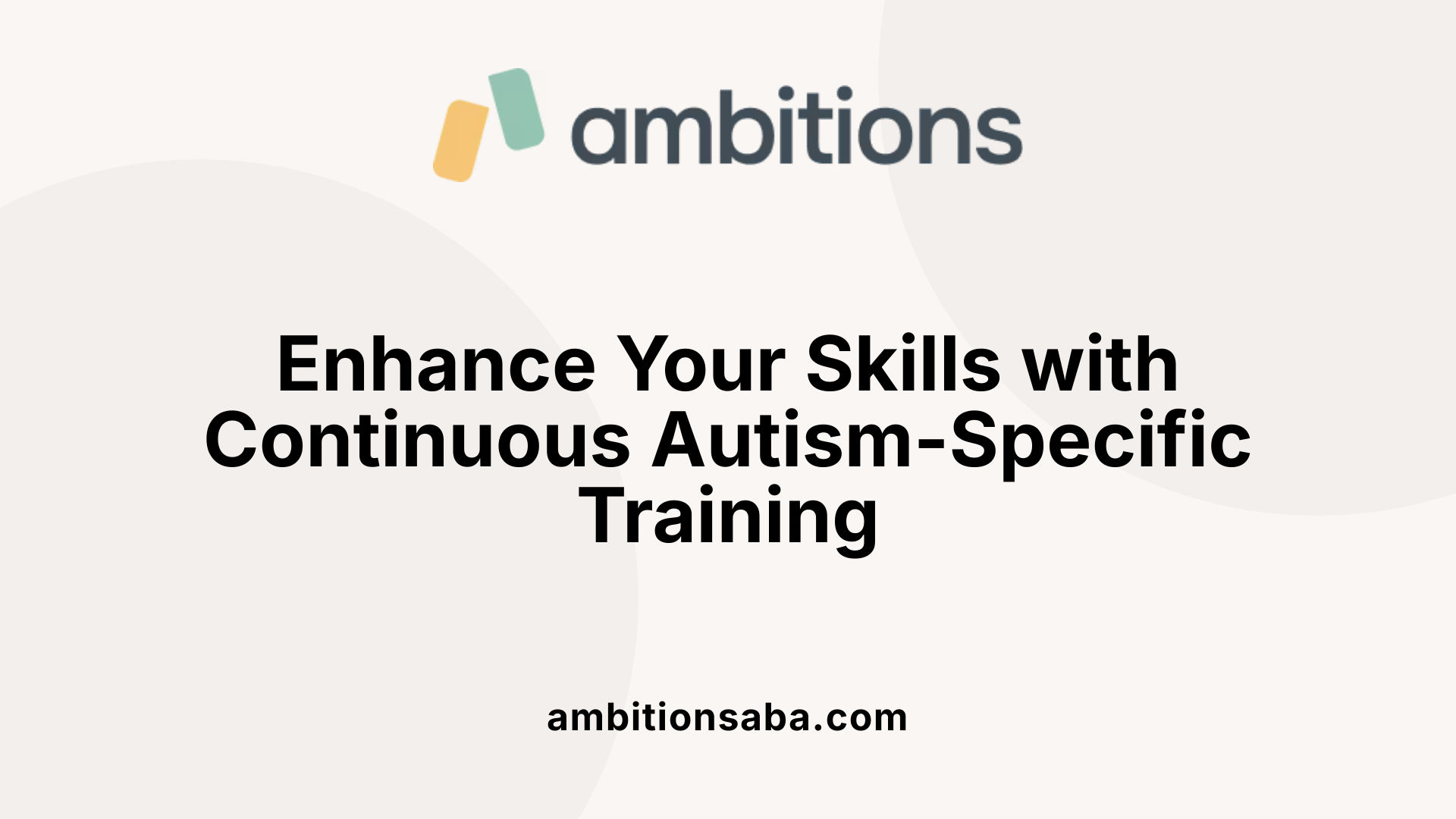
Why is training on autism-specific strategies important?
Effective support for students with autism relies heavily on educators staying informed about the best practices. Regular professional development sessions focus on evidence-based methods such as Applied Behavior Analysis (ABA), TEACCH, and the use of visual supports. These trainings help teachers implement structured routines, sensory accommodations, and communication strategies tailored to each child's needs. By continuously updating their skills, educators can create more inclusive and effective learning environments.
How can involving families and community resources enhance support?
Collaboration between schools, families, and community organizations forms the backbone of a comprehensive support system. Engaging parents frequently allows educators to understand each child's unique preferences, triggers, and strengths. Community resources—such as speech therapists, occupational therapists, and social workers—offer additional expertise and services, enriching the child’s development. Regular communication and shared goals create consistency across settings, which is crucial for children's growth.
What strategies promote a strong professional learning community?
Building a collaborative professional learning community fosters shared learning and peer support. Teachers can participate in workshops, peer observations, and team meetings focused on autism support strategies. Establishing a culture of openness encourages teachers to share successful techniques and challenges. Collaborative planning helps adapt instructional methods and classroom setups to meet diverse needs, enhancing overall student outcomes.
How do team collaboration approaches support autistic children?
Regular training, family involvement, and interprofessional collaboration strengthen team support systems. When educators, specialists, and families work together, they develop cohesive plans that address sensory, communication, and social needs effectively. Open communication ensures everyone understands progress and adjusts strategies as needed. This unified approach creates a stable foundation for fostering skills and promoting positive behaviors.
| Strategy | Purpose | Examples |
|---|---|---|
| Ongoing teacher training | Keeps educators updated on best practices | Workshops, seminars, online courses |
| Family engagement | Ensures consistency and personalized support | Regular meetings, home-school communication |
| Interprofessional collaboration | Integrates expertise for comprehensive support | Team meetings with therapists, counselors |
| Peer support among staff | Builds a collaborative learning environment | Coaching, staff study groups |
Fostering a well-trained and connected support network makes a profound difference in the educational experiences of children with autism, helping them reach their full potential.
Creating a Cohesive and Supportive Autism-Inclusive Classroom Environment
In conclusion, supporting autistic children in group learning settings involves a multifaceted approach that integrates sensory accommodations, visual supports, social skills training, team collaboration, and ongoing professional development. By fostering understanding, implementing evidence-based practices, and maintaining a flexible, inclusive environment, educators and caregivers can empower autistic children to participate fully, develop essential skills, and thrive academically and socially. Building a collaborative network that shares insights, strategies, and resources ensures that each child's unique needs are met, paving the way for a more inclusive and accepting educational climate.
References
- Autism in the classroom: Strategies for success
- Effective Classroom Strategies for Teaching Students with Autism
- How To Provide Effective Whole Group Instruction in Special ...
- Educational Support for individuals with Autism: Creating Inclusive ...
- 24 Classroom Activities for Kids with Autism | Waterford.org
- Setting Up Supportive Classrooms - VCU Autism Center for Education
- The Team Approach to Educating Students with Autism
- Utilizing Peers to Support Academic Learning for Children With ...
- How to Teach Children with Autism to Follow Group Instructions?
- Page 6: Instructional Considerations - IRIS Center


